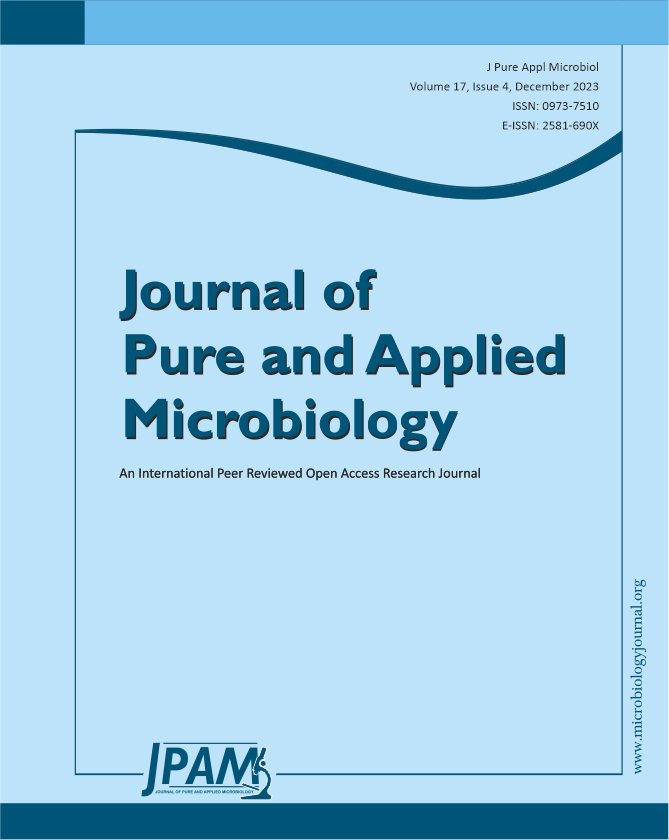The leaves essential oil of Eupatorium odoratum (L.) obtained by the hydro-distillation method was light yellowish in colour, having pungent aromatic fragrance with the yield of 0.010%. Fifteen secondary metabolites were identified via the GC-MS analysis of the essential oil and tau-Cadinol (20.10%) was found to be the major secondary metabolite in the essential oil followed by α Bisabolol (15.33%), cis-muurola-4 (14) 5- diene (10.79%), Isobornyl acetate (6.40%), and Isocaryophyllene (5.39%). The antimicrobial efficacy was investigated via agar well diffusion technique and essential oil was most effective against P. aeruginosa with inhibition zone 22.00±0.57 mm, which was followed by E. coli (19.00±0.57 mm), S. aureus (18.33±0.33 mm), K. pneumoniae (16.50±0.33 mm), and S. pyogenes (11.00±0.33 mm). MIC and MBC values were observed lowest against P. aeruginosa, i.e. 3.12µl/ml and 6.24µl/ml, respectively. Antioxidant activity of essential oil was investigated by DPPH and H2O2 scavenging assay and IC50 value was found very low, i.e. 10.58µl/ml and 11.76µl/ml, respectively, so the essential oil was considered as a potential antioxidant agent. The results validate scientifically the traditional utilization of leaves essential oil of E. odoratum in traditional medicinal system and confirmed that it can be used as modern phytomedicines as an antimicrobial as well as antioxidant agent.
Eupatorium odoratum, Essential Oil, GC-MS, Antimicrobial Activity, Antioxidant Activity
© The Author(s) 2023. Open Access. This article is distributed under the terms of the Creative Commons Attribution 4.0 International License which permits unrestricted use, sharing, distribution, and reproduction in any medium, provided you give appropriate credit to the original author(s) and the source, provide a link to the Creative Commons license, and indicate if changes were made.


